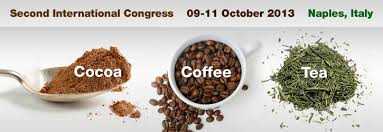Kocadağlı T., Özdemir K.S., Gökmen V.Hacettepe University, Department of Food Engineering, 06800, Beytepe, Ankara, Turkey tolgahan@hacettepe.edu.tr Tea might be a substantial dietary source of certain free amino acids due to its worldwide consumption in large quantities.This study aimed to investigate free amino acid profiles of black and green tea infusions. Hydrophilic interaction liquid chromatography (HILIC) coupled to tandem mass spectrometry was used to analyze free aminoacids in tea without any pre-column or post-column derivatization.
A total 20 aminoacids (18 proteinogenic and 2 non-proteinogenic) were determined in black and green tea samples. Sum of the concentrations of free amino acids in tea infusion after 2 min of brewing process was 220.53 mg/l and 211.21 mg/l for black and green tea, respectively.
It linearly increased reaching to 311.17 mg/l and 277.43 mg/l for black and green tea, respectively, within 15 min of brewing at 85 °C. Leaching rates were differed significantly for different individual amino acids. In general, hydrophilic amino acids leached into infusion faster than hydrophobic amino acids.
Approximately 30% of total free amino acids in tea infusions after 15 min of brewing was theanine. Comparing to black tea, amino acids in green tea had lesser leaching rates, most probably due to differences in phenolic compound profile and their concentrations.
The analytical method based on HILIC coupled to tandem MS was a rapid and useful tool to monitor the changes in free aminoacid profile of tea during brewing of tea.



















